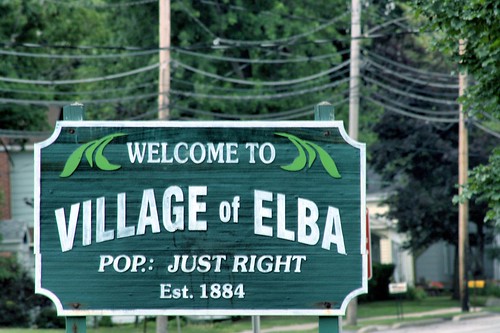In Elba, three buildings were used to shelter and hide escaped slaves before they continued on to LeRoy. These buildings are on North Main Street and were the Warren Shamp house, the home of Colonel Elias Pettibone, and the Willis Tavern. In the Pettibone home, a dutch oven hid a tunnel in the cellar that connected under the street to the Willis Tavern. There was also a second tunnel in the Pettibone home that led to a long torn down barn that stood behind the Presbyterian Church. The tunnel at the former Pettibone home was covered over by solid flooring but still exists. As the tunnel was likely never filled in.
At the tavern, the was a trap door where the escaped slaves would have been hidden. As for the Shamp home, its history wasn't discovered until 1993. This was after a pre-sale inspection of the home lead to the discovery of a small area under one of the rooms. This small was was also walled off in the basement by a stone wall.
As i said, the Underground Railroad in Elba isn't all that well documented. Yet, it played a crucial part as slaves made their way to Canada or tried to shake slave catchers on their trail. To this day, the town takes pride in playing their part in aiding slaves in escaping their captors. When i was younger, elementary school aged, our class took a history tour through the town in the early 90s. We didn't get to see inside the buildings where the tunnels were but the history of Elba's Underground Railroad has stuck with me since then. It's the town i grew up in and its rich history makes me proud to have experienced living there.
Get the Book in Paperback: Underground Railroad in New York and New Jersey (The Underground Railroad)



